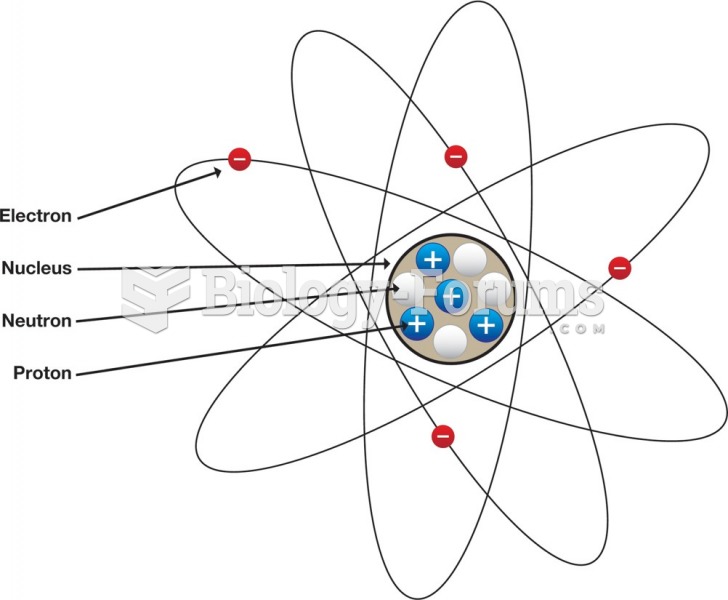|
|
|
The horizontal fraction bar was introduced by the Arabs.
Less than one of every three adults with high LDL cholesterol has the condition under control. Only 48.1% with the condition are being treated for it.
The highest suicide rate in the United States is among people ages 65 years and older. Almost 15% of people in this age group commit suicide every year.
For high blood pressure (hypertension), a new class of drug, called a vasopeptidase blocker (inhibitor), has been developed. It decreases blood pressure by simultaneously dilating the peripheral arteries and increasing the body's loss of salt.
There can actually be a 25-hour time difference between certain locations in the world. The International Date Line passes between the islands of Samoa and American Samoa. It is not a straight line, but "zig-zags" around various island chains. Therefore, Samoa and nearby islands have one date, while American Samoa and nearby islands are one day behind. Daylight saving time is used in some islands, but not in others—further shifting the hours out of sync with natural time.
 The blue sticker on the rear of this vehicle indicates that it is designed to use compressed natural ...
The blue sticker on the rear of this vehicle indicates that it is designed to use compressed natural ...
 The basic structure of an antibody molecule. Two heavy chains are joined by two light chains. The ...
The basic structure of an antibody molecule. Two heavy chains are joined by two light chains. The ...





